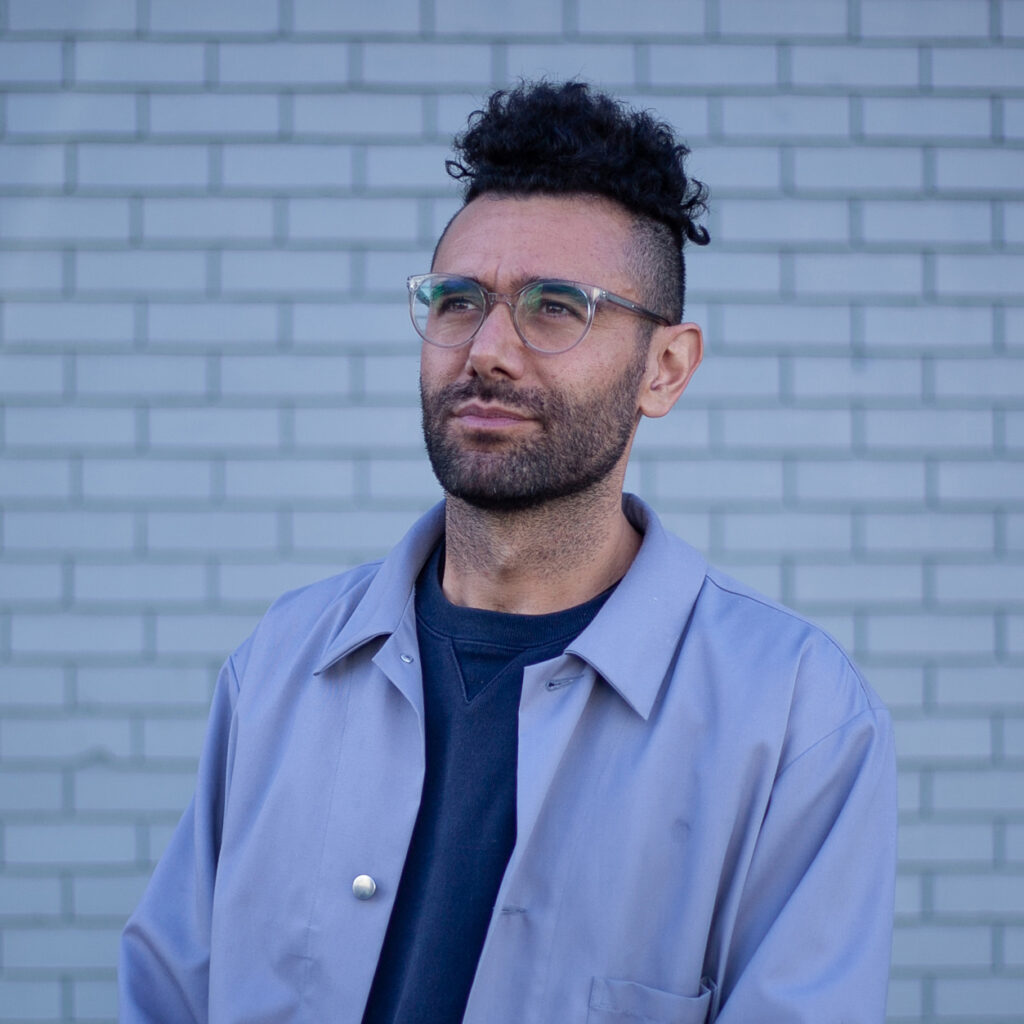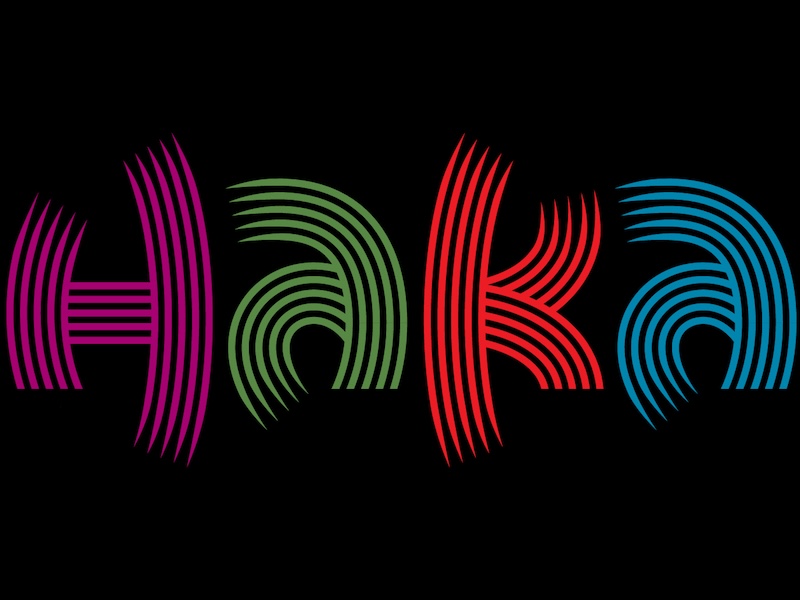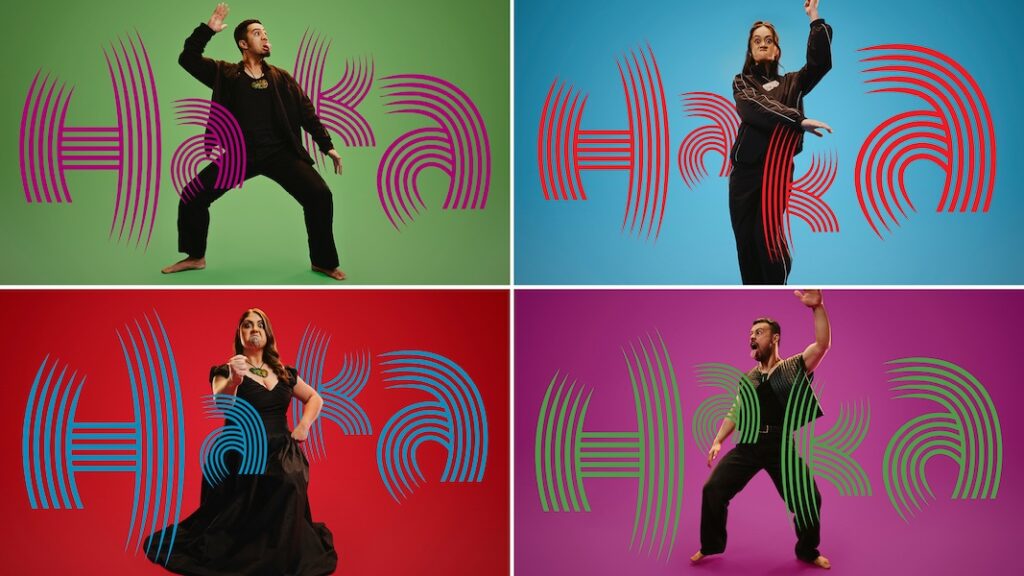Tyrone Ohia’s work is all about pushing the envelope for what Māori design can look like.
So when the opportunity came up to work on Dame Hinewehi Mohi’s Haka campaign, he jumped at the chance.
The campaign in question is a big one – to bring the World Record for the most people performing a haka home to Aotearoa.
Currently, the record is held by a group of 4,000 in France. But Dame Hinewehi wants to inspire 10,000 people to come along to Auckland’s Eden Park and perform Ngāti Toa’s haka, Ka Mate on September 29.
Aside from taking out the record, the campaign is also a fundraiser for Dame Hinewehi’s charity, Raukautauri Music Therapy Centre, which celebrates its 20th anniversary this year.
“We came into it going, okay well this is an opportunity to tell a bit of a story through the design that we do that educates people more thoroughly and maybe more authentically about the origins of haka,” says Ohia (Ngāti Pukenga, Ngāi te Rangi).
“And also to maybe dispel some of the stereotypes that it naturally falls under.”

Ohia is the Founder and Creative Director of Tāmaki Makaurau based design studio Extended Whānau, where the goal is to use design to make Māori culture more visible to the whole of Aotearoa.
“We spend a lot of time thinking about identity could be in this country from a te reo Māori point of view, but for everyone, because there’s so much richness in our culture,” says Ohia.
Haka is a powerful symbol, both within Aotearoa and internationally and so this campaign is the perfect opportunity to bring that richness to the surface, to educate and make Māori feel like they’re seen, he says.
The origins of haka are found in the Māori creation narratives where Tānerore, the son of Tama-nui-te-rā and Hineraumati, is said to be the personification of shimmering air.
On hot days, the trembling heat haze we see above the road is Tānerore performing a dance, or haka for his mother, explains Ohia.
Instead of creating a pictorial logo, the team decided to represent that story in the word haka itself – different elements like vibrating lines imbue energy and empower the letters so everyone can see them dancing, he adds.

“We look at these letters as if they’re little performing characters, they’ve got edges that are moving. In the way that haka is a dance, it is about invigorating your body and activating all aspets of yourself through your singing, stomping, moving your arms.”
Each of the letters has a flat end that represents the strong stomping in haka, which grounds you to Papatūānuku, the earth, says Ohia.
Along with implying movement, the vibrating lines also represent sound – speaking to the ability of haka to resonate both physically as a performance and globally as an art form.
Extended Whānau calls their creative process a wānanga approach – for this campaign weekly Zoom calls with Hawkes Bay-based Dame Hinewehi meant they could share ideas to arrive at the answers together.
“From a Māori point of view, she’s our leader, it’s like a tuakana-teina model where you have elders and the youngers, so we work with her and gain authority, not in a formal way, just in a respectful way.”
With haka a way of bringing people together, Mohi was clear that the campaign had to be for all people of Aotearoa, which made colour another important aspect.
This was probably one of the key challenges, says Ohia, because a black and white scheme makes everyone think ‘All Blacks’.
“And we wanted to move beyond that… into much more of an inclusive festival that everyone could be a part of. One of the stereotypes we wanted to address and hopefully paint a different side of is that haka are just war dances.”
That’s with no disrespect to the All Blacks and what rugby has done for haka, but there are so many more layers to it, he adds. While there are haka to prepare yourself for battle, there’s almost one for any situation, from thanking people for food, or saying goodbye.
So the colours developed from there – two different reds to represent the human element, with blue and green for the natural environment, says Ohia.

Inclusivity was important, so the creative features two young men and two young women bringing the haka to life while surrounded by the shimmering words.
“It’s not traditionally Māori in its patterning, there are links but… it’s also still quite modern,” says Ohia.
This is a real balancing act of acknowledging the history and culture while also making the campaign speak and reach a wider audience, he adds.
“We get excited about pushing into contemporary spaces like this… We’re often thinking about the younger generation who are on the marae but they’re also on TikTok and into anime. It’s trying to diversity our Māori visual language.”
He encourages as many Kiwis as possible to get involved on September 29.
“For most people they might even know 50% of the words from hearing the haka so often, so it’s just the push you ned to learn the rest of the words, the actions and then have a lived experience where you do the haka and open that doorway for yourself.”
Earlier this year, Extended Whānau created the Matariki logo, which they saw inspired people to be inquisitive and find out more about the Māori new year and Ohia is excited to see what the Haka event will lead to.
“I’m hoping it continues to open up that door and inspire others to think about what other aspects of our culture we need to address, embrace or deal with.”
The post Extended Whānau empowers Aotearoa to embrace haka appeared first on stoppress.co.nz.
More Stories
EXCLUSIVE: Most Americans Don’t Care If TikTok Shuts Down
Trump Grants TikTok a Second 75-Day Extension, Pushing Deadline to Mid-June
Reinventing Retail for Gen Z: Stacy Doren’s Vision for Journeys